Aging and Joints

As we age, we hope to develop knowledge, skill, and experience. While aging has its benefits, not many of them are apparent when it comes to your joints. Joints become stiffer as you age, and they cannot bend as easily because of changes that occur in your ligaments and tendons. Making things worse, the cushion that protects within your joints thins with age, which can bring on arthritis and inflammation. As the protective cartilage around your joints dries and stiffens and can slowly wear away.
There’s another common effect of aging that involves the fluid that oils your joints and keeps them bending smoothly. This is called synovial fluid. As your body ages, it produces less synovial fluid.
All of these problems together can add up to restricted, painful joints for many. And while moving around may not sound appealing, it’s actually the right way to address this common problem of aging. As you move, the synovial fluid in your joints is better able to keep your joints loose.
Morning Stiffness
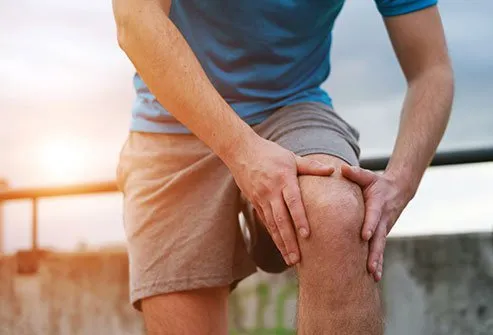
There are a few different things working against your hopes for a pleasant morning if you suffer from stiff joints. One is that tight tendons and muscles often tighten while you sleep. That means you wake up to joint stiffness, because the joints are intimately connected by muscle fibers, ligaments, and tendons. Another is arthritis. Both of the most common forms of arthritis—osteoarthritis and rheumatoid arthritis—tend to stiffen your joints in the mornings in particular. Strengthening and stretching your tight muscles can help. Supplements such as chondroitin and glucosamine seem to do little to manage joint health symptoms.
What Is Osteoarthritis (OA)?
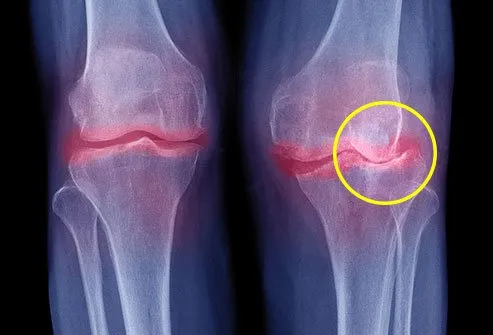
Your rubbery cartilage keeps your bones from rubbing together at the joints. Cartilage lets your joints glide smoothly, and it cushions the bones under normal circumstances. But osteoarthritis (OA) causes cartilage to break down. That leaves your joints painful with swelling and restricted movement.
OA can cause your joints and cartilage to break down over time. This leads to bone growths called bone spurs. Your body tries to react to protect your bones by becoming inflamed. But some of the chemicals involved in the inflammatory process can damage cartilage even more.
OA is the most common chronic joint problem. Nearly 30 million Americans have OA. While any joint can be harmed by OA, it tends to impact certain areas more than others. Fingers are vulnerable to OA, as are necks, hips, knees, and the lower back. Anyone of any age can be impacted by OA, but it is most common for those over age 65. In fact, one out of every 12 people over age 60 has OA.
Osteoarthritis Treatment Text

If you’ve been diagnosed with osteoarthritis, there are a few steps you can take to manage this painful condition:
- Lose weight. When you lose weight, you take a lot of the pressure off your joints, particularly in your back, hips, knees, and feet. This will help reduce any further joint damage. To lose weight, consume fewer calories.
- Stay active. Physical activity actually reduces OA pain in the long run. When you work out, you strengthen your muscles. Stronger muscles take some of the pressure off your joints. It also helps keep your joints lubricated and helps get to your ideal weight, and maintain it once you do.
- Stretch. When stretching slowly and gently, you ease stiff joints and reduce the pain they cause. Some fun, popular forms of stretching include yoga and tai chi.
- Take medicine. There are several medications available to OA sufferers. Pain medicines, including acetaminophen (Tylenol), aspirin, and ibuprofen are recommended for OA pain. Corticosteroids can help reduce the inflammation that often accompanies OA. Hyaluronic acid injections can replace the fluid that breaks down inside your joint fluid.
- Get help. Your doctor can recommend physical and occupational therapies that can teach you how to live with less OA pain. Doctors can also recommend useful devices that can help with mobility issues like opening jars, steering your car, or walking.
- Surgery. If your condition is serious enough and your doctor thinks surgery can help, this is an option for some patients. Surgery can be used to replace or repair joints damaged by RA—particularly knees and hips.
What Is Rheumatoid Arthritis (RA)?
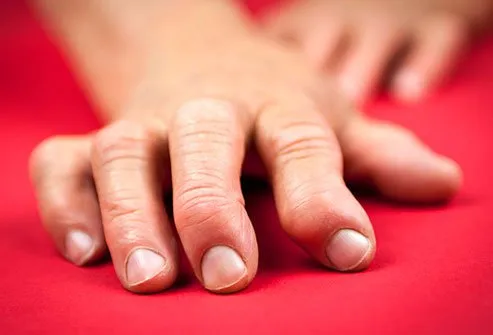
If you experience pain, swelling, or stiffness in your hands, arms, feet, or legs for more than six weeks, you may have rheumatoid arthritis (RA). This autoimmune disease causes your immune system to mistakenly attack the lining of the joints, known as the synovium.
RA causes inflammation that can damage joints over time. It can also inflame your blood vessel and lungs. Although less common than osteoarthritis, RA still affects an estimated 1.5 million Americans. It’s more common in women than in men, occurring about three times as often. Typically, for women, this condition begins between ages 30 and 60. For men, the condition typically appears slightly later in life. Although family members with RA raise your risk, most people who have RA do not have a family history of the disorder.
Rheumatoid Arthritis Treatment

Doctors who treat RA have multiple goals. They seek to slow or stop the progress of joint damage, ease pain and stiffness, prevent deformity, and put an end to the inflammation it causes. To do this, they turn to medications and sometimes surgery.
Rheumatoid Arthritis Medications
- DMARDs. These antirheumatic drugs work to reduce the inflammation RA brings on. Some traditional DMARDs accomplish this by wiping out the whole immune response. More recent versions of these drugs, known as biologics, target particular steps along the inflammation process. DMARDs may be injected, taken orally, or give at the doctor’s office via infusion.
- NSAIDs. These common pain relievers help reduce pain and inflammation. This class of drugs includes ibuprofen, naproxen, and the prescription drug celecoxib. A patient may be instructed to take these orally or on the skin as a patch or cream.
- Corticosteroids. These anti-inflammatory medicines act quickly. They can help control inflammation as DMARDs NSAIDs take effect.
- Biologics. These medications target the specific portion of the body’s immune system that is abnormally active in rheumatoid arthritis.
Surgery for RA
Surgery is for people who have suffered joint damage that seriously limits their ability to move normally. It basically comes down to joint replacement. While hip and knee replacements are the most common types of this surgery, other joints can also be replaced, including those in the hands, arms, ankles, and shoulders.
Other Arthritis Types

Although OA and RA make up the majority of arthritis cases, there are many other forms of this disorder that can cause joint pain.
- Psoriatic arthritis. Psoriasis is known for causing itchy skin and rashes, but this autoimmune disease also harms joints. People with psoriatic arthritis usually experience skin problems before their joints become inflamed. This can cause permanent joint damage if untreated.
- Infectious arthritis. Also known as septic arthritis, this uncommon condition starts from a joint infection usually caused by bacteria. It causes intense pain and swelling in the affected joint. Half the time the affected joint is a knee. Since this is usually caused by a bacterial infection, antibiotics and even surgical drainage may be your best treatment.
- Gout. Many people don’t think of gout as a form of arthritis, but it is. Severe pain, redness, swelling, and warmth in the big toe are the most common symptoms of gout, but it can also affect the knees, ankles, and other lower-body joints. Uric acid buildup causes gout, and diets high in alcohol, red meats, and sugary sodas can trigger this.
- Ankylosing spondylitis. This disease inflames the spine, usually starting around the lower back or buttocks area and moving upward towards the neck. About half a million Americans have ankylosing spondylitis, which is thought to be influenced by genetics. Caucasians, Asians, and Hispanics are most likely to develop this disease, and it affects more men than women.
Weather Can Cause Joint Pain

Can your aching joints really predict the weather? Some scientists say yes, but the precise mechanism of this has not be established. Your joints have nerves inside them called baro-receptors. These nerves respond to atmospheric pressure changes that often bring on bad weather. When the atmospheric pressure drops, some arthritis sufferers can feel it in their hands, shoulders, knees, hips, and elbows. Cooler weather can bring on joint pain, too.
Joints and Fibromyalgia

More than any other symptom, fibromyalgia is known for causing widespread body pain. That pain can appear at different places in the body when the disorder first appears, usually in early adulthood or adolescence. The pain can feel like a deep, muscular pain that, at its worst, can be unbearable. As difficult as this condition is, fibromyalgia at least has one advantage over arthritis in that the pain it causes does not damage your joints.
Fibromyalgia Treatment
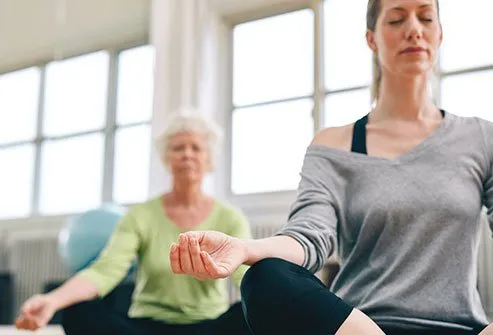
There is no known cure for fibromyalgia, but there are treatments that can help ease the pain. Gentle exercise may be recommended by your doctor. Cognitive behavioral therapies are useful for some patients as well. Some patients with fibromyalgia also take medications to ease their symptoms. Creating long-term health goals along with self-management strategies for dealing with fibromyalgia pain can reduce the frequency and intensity of painful flare-ups.
Joint Injury Dangers
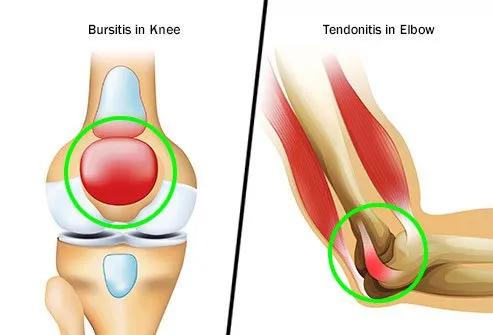
Joint injuries come in many types, but two common ones are bursitis and tendonitis (also called tendinitis). Both are forms of inflammation, and both usually occur when a joint is misused or overused over time.
Tendonitis
Tendonitis refers to severe swelling of a tendon. Tendons are the elastic tissues that connect muscles to bones, allowing your body to move. Tendonitis tends to be named after the part of the body it affects or the sport that increases the risk of these injuries. Different types of tendonitis include swimmer’s shoulder, tennis elbow, and trigger finger, as well as Achilles tendonitis and biceps tendonitis. Treatment may include rest, cold application, steroid injections, anti-inflammatory medicines, and lifestyle changes.
Bursitis
Bursas are small sacs filled with fluid. They offer a cushion between bones and other parts of the body like muscles and tendons. When you’ve been overusing a joint over time, a bursa can inflame, becoming bursitis. It causes pain and swelling. Some people get them on their knees from kneeling for long periods. Repetitive movements can cause bursitis, too.
Bursitis can be treated with a variety of measures. At first, people usually attempt to ease bursitis pain with medicine, ice application, and rest. If the inflammation persists, local cortisone injection can be very helpful. Rarely, surgery can be required to resect the inflamed bursa.
Joint Injury Treatment

It’s bad news having an injured joint. But the good news is that you’ll likely make a full recovery once you begin treatment. Start with resting the joint that’s causing you pain. Try to avoid using it if at all possible. Your doctor may suggest that you take anti-inflammatory over-the-counter drugs, too, such as ibuprofen.
Once you see the doctor, describe your condition in detail and explain how you think you acquired it. Once your doctor makes a diagnosis, you may be given a splint and instructed to ice the injured joint.
Various forms of exercise may be ordered as well.Sometimes these measures don’t cure the joint injury completely. If your joint doesn’t respond to these treatments, you may need to return to the doctor. At that point your doctor can inject a more powerful drug directly into the injured area to manage swelling and pain.
Joints and Exercise

Yes, it can be painful to move when your joints ache, but movement keeps your joints loose. You don’t want the exercise to be unbearable, but it should keep you active. Walking may be beneficial depending on where your joints are aching. Light gardening can also be helpful to keep away stiff joints. Whatever exercise you choose, start off slowly and gently. If even gentle exercise is too painful, discuss it with your doctor.
Heat for Joint Pain

Heat can benefit stiff joints. By heating up the affected area, you promote blood flow which helps the healing process and relaxes muscles.
There are different ways to apply heat. You can soak in a hot bath or shower. You can use a hot water bottle. There are also moist heat pads available from drug stores. Or you can take a wash rag, wet it, place it in a freezer bag and stick it in the microwave for 1 minute. Afterwards, take the hot rag, wrap it in a towel, and place the two on your swollen or painful joint. Careful, the rag should not be so hot that it is uncomfortable.
Cold Treatment for Joint Pain

Cold therapy reduces blood flow. It does this by narrowing the blood vessels. This is good for a newly swollen joint, such as the kind affected by tendonitis, because it minimizes swelling. You can use almost any cold thing as a cold compress—store-bought cold pack, a bag of frozen veggies, or bagged ice cubes. Just make sure you use a towel between the cold thing and your skin to protect it from freezingburns. Place the cold compress onto the swollen joint for no more than 20 minutes at a time. If your whole body is affected with swollen joints, you can try a chilly ice bath.
When Should I Call My Doctor About Joint Problems?

Many people experience joint pain, and many don’t need to visit the doctor to ease their symptoms. But sometimes joint pain requires expert care. Go to the doctor immediately if you notice any of the following:
- Your joint has become unusable
- You experience sudden joint swelling
- You’ve been injured
- Your joint appears deformed
- Your joint pain is extreme
Making a Doctor’s Appointment

Some joint pain is aggravating and distracting, but doesn’t need emergency care. While you may not need to see a doctor immediately, here are signs that you should make an appointment to see your physician:
- The skin around your joint is red or warm
- Your pain, swelling, or stiffness lasts for three straight days or several times in a month
- Your joints are tender to the touch and difficult to move
- Fever, chills
Arthritis: Causes and Treatment for Joint Stiffness and Pain
This tool does not provide medical advice. See additional information: 
© 1996-2024 WebMD, LLC. All rights reserved.
